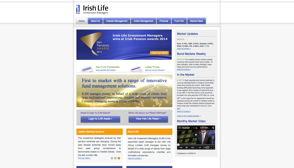Pension Adjustment Orders: Change in tax treatment where a ‘Chargeable Excess’ arises
The Finance Act 2014 has introduced a number of changes to the tax treatment of retirement savings over which a pension adjustment order has been made. This change applies specifically to cases where a Chargeable Excess arises.
As you will be aware currently a €2m Standard Fund Threshold (SFT) limit applies. This is a lifetime limit on the total capital value of pension benefits that an individual can draw. It applies to all benefits taken after 7 December 2005. In certain cases an individual may have a Personal Fund Threshold (PFT) in excess of this limit. On each occasion an individual becomes entitled to receive a benefit under a pension arrangement they use up part of their SFT or, if applicable, PFT. Where the capital value of a payment exceeds an SFT or PFT a ‘Chargeable Excess’ arises to the extent that the SFT or PFT is exceeded. The excess is subject to an upfront tax charge of 40%, subject to a number of limited offset provisions.
Under the previous arrangements if a Chargeable Excess arose on which tax was due in relation to a benefit on which a pension adjustment order was made the original member was liable for the entire tax charge. This was seen as inequitable where the original member is not benefiting from the entire fund.
Under the recent legislation an attempt has been made to redress the balance. In essence the proposal is simple but is likely to present challenges in implementation.
The principle of the apportionment set out in the legislation is that the tax shall be apportioned between the member and the non-member so that each party’s share of the tax reflects the split in the overall retirement benefit.
The non-member and the Administrator of the arrangement in which the non-member’s benefit is held at the time the Chargeable Excess are jointly and severally liable for the payment of the tax.
While the above proposal may be relatively straightforward in circumstances where the non-member’s benefit remains in the original scheme, complications arise where benefits may have transferred to other arrangements or where the non-member spouse may have drawn retirement benefits. The solution provided by the legislation in relation to this is that the Administrator of the member’s benefit should identify the Administrator of the non-member’s benefit and, within 21 days of the end of the month in which the calculation giving rise to the Chargeable Excess occurs, provide a certificate including certain specified information including the amount of tax due and the basis for calculation of same.
While the number of cases affected by the above will be small the practical application has the ability to be challenging. For instance Administrators will have to make sure that appropriate records are kept to ensure, insofar as is possible, that the current location of the non-member’s benefit can be located at the relevant time.








